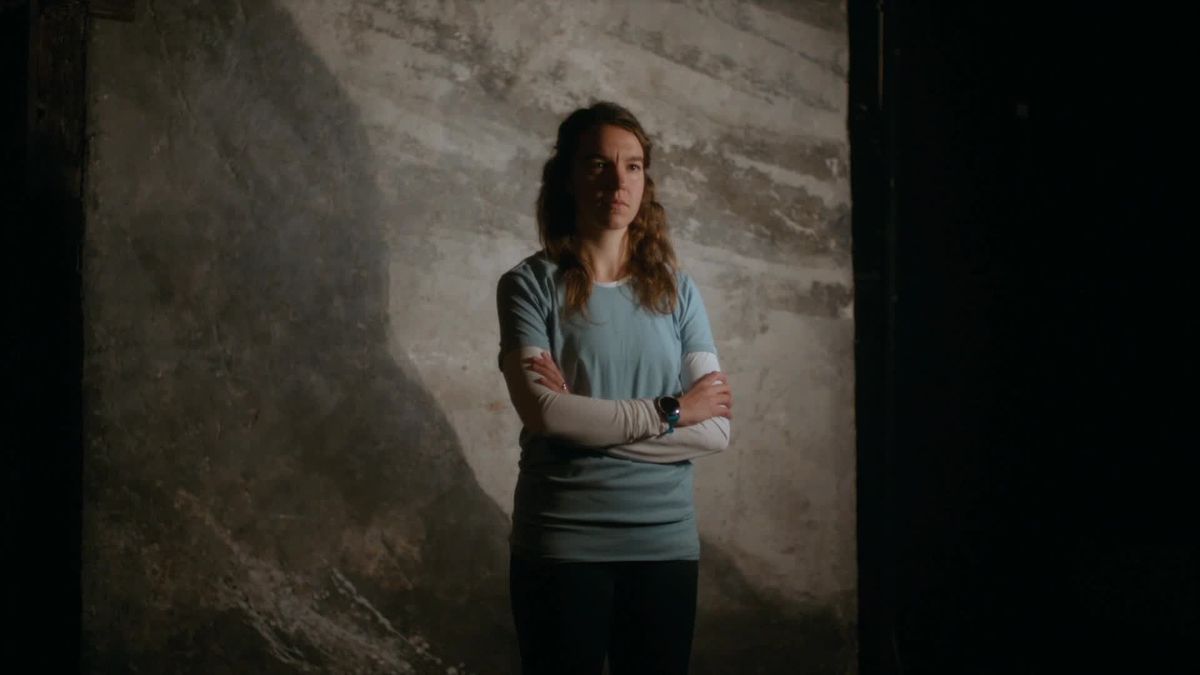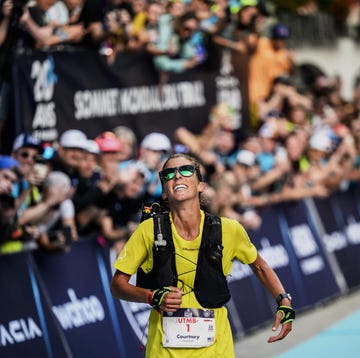Long before the likes of Eliud Kipchoge, Jesse Owens and even Leonidas of Rhodes, arguably the greatest runner in the ancient Olympics, we ran. More than 3 million years ago, the early hominins from which humanity emerged bipedally propelled themselves forward, perhaps in pursuit of food, to evade a predator, or as a form of playful competition with their fellow Australopithecus afarensis.
Although we don’t know exactly why they ran, we now know how they ran – and that’s thanks to new analysis of ‘Lucy’, the name for the collection of 3.2-million-year-old australopithecine bones first found in Ethiopia in 1974. As for her running form? Well, if the write-up in The New York Times is anything to go by, it was poor.
To be clear, The New York Times hasn’t randomly decided to critique the athletic form of primeval creatures like some sort of prehistoric roast. Instead, the newspaper has reported on a new study published in Current Biology, where researchers conducted a series of simulations, based on a reconstructed Lucy, to determine the speed at which Australopithecus afarensis likely ran. It summarised the scientific findings as follows: ‘[Lucy] would not have been much of a marathoner and might have struggled to keep up with a contemporary couch potato in a 100-yard dash.’
What everyone's reading
These harsh sentiments echo those of Karl Bates, the lead author of the paper and a professor of musculoskeletal and ageing science at the University of Liverpool. ‘She was not a natural runner,’ says Bates, of Lucy. ‘In all probability, she could run only through short bursts of energy rather than long-distance chases.’
Even though Lucy was first discovered more than 50 years ago, only recently have we begun to analyse and understand more about this ancient ancestor of humanity. In fact, it was not until 2016 that an autopsy on her remains was able to determine that Lucy likely died falling from a tree.
‘Seven years later, a virtual reconstruction of her leg and pelvic muscles – which are not preserved in fossils – revealed that she stood about three and a half feet tall, weighed between 29 and 93 pounds and was capable of standing and walking upright, similar to modern humans.,’ summarises The New York Times.
And now we know that Lucy couldn’t just stand and walk – she could also run.
To discover this, the researchers created a computer simulation which used the surface area of Lucy’s bones and the muscular architecture of modern apes to estimate her muscle mass. From there, as can be seen in a video on The New York Times website, the simulation cycles through ‘millions and millions of different sequences’, according to Bates, until it finds one that offers ‘the fastest speed with minimum energy cost’.
Bates and his team then created a model based on a current day human, which, as The New York Times notes, had ‘measurements [which] echoed those of the 5-foot-9, 154-pound Bates, who is 38’. For his part, Bates states that the reason for the comparison between cyber-Lucy and cyber-Bates is that it ‘allowed us to give a sort of maximum and minimum speed estimate for Lucy’. In addition, it allowed the team to ‘compare the effects that important anatomical features in human evolution had on running speed’.
The New York Times states that Lucy’s top running speed in the simulation was ‘a relatively modest 11 mph’. When you consider that modern humans can generally sprint at speeds of more than 18 mph, with top athletes even peaking higher than 27 mph, you’ll realise that Lucy was anything but a speed demon. ‘Dr Bates speculated that in a 100m race, Usain Bolt, the world record holder at that distance, would have beaten Lucy by somewhere between 50m and 80m.’ Ouch.
Although Lucy wouldn’t have beaten Usain Bolt in a race (then again, who could?), it’s not her fault. She simply wasn’t built for running.
‘On the whole, the hominins were living in places that had lots of trees, bushes and shrubs,’ says paleontologist Denise Su, speaking to The New York Times. ‘Prey species in more closed habitats tend to hide and freeze as a response, because there is a lot more cover – and you can’t run fast on landscapes with a lot of cover.’
The researchers were even able to determine the specific physical feature that was Lucy’s undoing as a runner: somewhat fittingly, her achilles heel was a lack of achilles tendons. ‘Lacking the long, elastic achilles tendons and shorter muscle fibres present in the legs of contemporary humans, Lucy would have had to work harder to move quickly,’ they say.
They even simulated how well Lucy would have run if she did have achilles tendons. ‘When humanlike ankle muscles were added to the cyber-Lucy, the amount of energy that she expended was comparable to that of other animals of similar stature,’ note the researchers. ‘But tack on apelike ankle muscles and she would have spent three times as much energy running as a modern human.’
So, we now know that Lucy’s lack of achilles tendons was the reason for her slower pace and more awkward running form. It might also explain why she was in the tree from which she fell and died, because she was better equipped to hide from predators than to flee from them on foot. Plus, we can feel good about the fact that we almost certainly would beat Lucy in any running race if she were alive today – trusting that we take care of our achilles tendons, of course.















